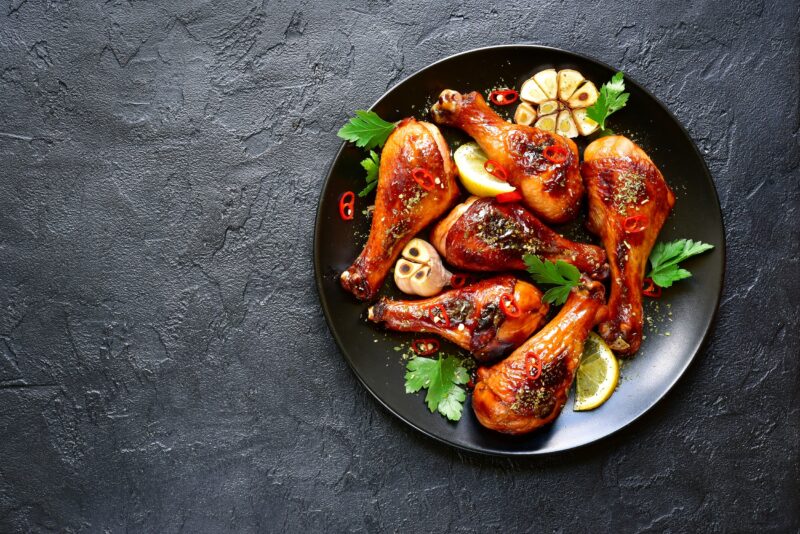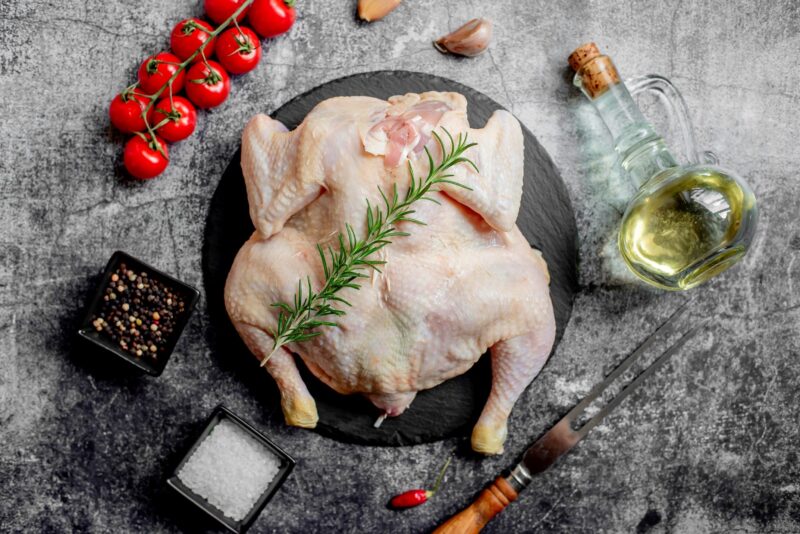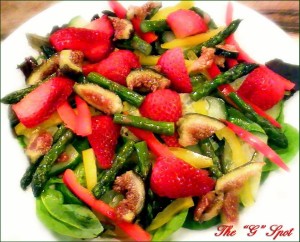
How To Prepare Chicken
The Ultimate Guide To Delicious And Easy Recipes
Cooking chicken is considered an art form that, when mastered, opens doors to a wide range of delectable and effortless recipes suitable for any event. Regardless of your expertise level in the kitchen, having a firm grasp on the fundamentals of chicken preparation can enhance your culinary abilities and amaze your dining companions. This comprehensive guide is designed to offer indispensable insights and methods for preparing chicken in a multitude of delightful ways. , understanding the basics of how to prepare chicken can elevate your culinary skills and impress your guests. This guide aims to provide essential tips and techniques to prepare chicken in various delightful ways.
Chicken is one of the most versatile ingredients in the culinary world. From roasting to grilling, the methods to cook chicken are endless, allowing you to experiment with flavors and textures. In this guide, you’ll discover practical advice, helpful tips, and step-by-step instructions on how to prepare chicken dishes that are both delectable and easy to prepare.
Choosing The Right Chicken
Selecting high-quality raw chicken is the first step in how to prepare chicken for a delicious meal. When shopping, look for chicken that is fresh and free of any unpleasant odors. Organic and free-range chickens are often considered superior due to their natural diet and humane raising practices.
If you have access to a local butcher, such as Grand Peaks Prime Meats, consider purchasing your chicken from them. Butchers can provide expert advice on the best cuts and how to prepare chicken to ensure you get the most flavorful and tender chicken possible. Remember, the quality of your chicken directly affects the final taste of your dish.
Proper storage is also crucial. Keep your chicken refrigerated and use it within a few days of purchase. For longer storage, freezing is an excellent option. Be sure to thaw frozen chicken safely in the refrigerator before cooking to maintain its quality and safety.
Understanding Chicken Cuts
Knowing the different cuts of chicken can help you choose the best one for your recipe. The most common cuts include breasts, thighs, drumsticks, and chicken wings. Each cut has unique characteristics that make it suitable for specific cooking methods.
Chicken breasts are lean and cook quickly, making them perfect for grilling, baking, and sautéing. They’re versatile and can be used in salads, sandwiches, and stir-fries. However, they can dry out if overcooked, so monitoring the cooking time is essential when learning how to prepare and cook chicken breasts.
Thighs, both bone-in and boneless, are more forgiving and flavorful due to their higher fat content. They’re ideal for braising, slow cooking, and roasting. The rich flavor and tender texture make them a favorite for many recipes involving how to prepare chicken, including stews and curries.
Drumsticks and chicken wings are excellent for grilling and frying. They’re juicy and flavorful, with a higher fat content that keeps them moist during cooking. These cuts are perfect for casual meals and gatherings, especially when marinated and cooked to perfection.

Preparing Chicken For Cooking
Properly preparing your chicken before cooking ensures even cooking and enhances flavor. Start by patting the chicken dry with paper towels. Removing excess moisture helps achieve a crispy skin when roasting or frying as you learn how to prepare chicken correctly.
Trimming excess fat and removing any leftover feathers or debris is essential. Use kitchen shears or a sharp knife to trim the chicken neatly. If your recipe calls for boneless chicken, you can debone it yourself or ask your butcher to do it for you.
Seasoning your chicken is a crucial step in how to prepare chicken. A simple combination of kosher salt, black pepper, and olive oil can enhance the natural flavors of the chicken. For more complex flavors, consider using marinades or spice rubs. Allow the chicken to marinate for at least 30 minutes, or overnight for deeper flavor penetration.
Marinating Techniques
Marinating is an excellent way to infuse chicken with flavor and tenderness. A marinade typically consists of an acid (such as lemon juice or vinegar), oil, and various seasonings. The acid helps break down the proteins, resulting in a more tender texture.
When learning how to prepare chicken with marinades, place it in a resealable plastic bag or a shallow dish, ensuring the marinade covers all surfaces. Refrigerate the chicken while marinating and avoid leaving it at room temperature to prevent bacterial growth.
For the best results, marinate chicken for at least 30 minutes. However, marinating for several hours or overnight can enhance the flavor further. Be mindful not to over-marinate, as the acid can break down the meat too much, resulting in a mushy texture.
Brining For Juiciness
Brining is another effective method to keep chicken moist and flavorful. A brine solution typically consists of water, kosher salt, and sometimes sugar or other seasonings. The salt in the brine helps the chicken retain moisture during cooking.
To brine chicken, dissolve salt and sugar in water, then submerge the chicken in the solution. Refrigerate for several hours or overnight, depending on the size of the chicken pieces. Rinse the chicken thoroughly after brining to remove excess salt before cooking.
Brining is particularly useful for lean cuts like chicken breasts, which can dry out quickly. This method ensures your chicken remains juicy and flavorful, even after grilling or roasting.
Roasting Chicken Perfectly
Roasting is a classic method that yields deliciously crispy skin and tender meat. To roast chicken, preheat your oven to around 375°F to 425°F, depending on the recipe.
Place the chicken on a roasting rack or in a baking dish, and season it generously. A mixture of fresh herbs, garlic, and lemon can add wonderful flavor. Roast the chicken until the internal temperature reaches 165°F, ensuring it is fully cooked.
Basting the chicken occasionally with its juices or a butter mixture can enhance the flavor and keep the meat moist. Let the chicken rest for a few minutes after roasting before carving to allow the juices to redistribute. This technique is crucial in mastering how to prepare chicken through roasting.
Grilling Techniques
Grilling chicken imparts a smoky flavor and is perfect for outdoor cooking. Preheat your grill to medium-high heat and oil the grates to prevent sticking. Grill the chicken pieces, turning them occasionally to ensure even cooking.
Bone-in pieces like chicken thighs and drumsticks benefit from indirect grilling, where they’re cooked over a cooler part of the grill. This method prevents the exterior from burning before the inside is fully cooked. Use a meat thermometer to check for doneness, ensuring an internal temperature of 165°F.
For added flavor, consider using wood chips or charcoal to enhance the smoky taste. Marinated or spice-rubbed chicken works exceptionally well on the grill, offering a variety of flavor profiles.
Pan-Searing For Crispiness
Pan-searing is a quick and efficient method to achieve a crispy exterior while keeping the inside moist. Heat a skillet over medium-high heat and add a small amount of oil. Place the chicken pieces in the skillet, skin side down if applicable.
Cook the chicken until it develops a golden-brown crust, then flip and continue cooking until fully cooked. For thicker pieces, you may need to finish them in the hot oven. This method is ideal if you want to cook chicken breasts and thighs, especially boneless ones, and is a key part of how to prepare chicken using pan-searing.
Deglazing the pan with a bit of broth or wine after cooking can create a flavorful sauce to accompany your chicken. This technique adds depth to your dish and makes it more sophisticated.
Baking Chicken For Simplicity
Baking is a straightforward and reliable method for cooking chicken. Preheat your oven to 375°F and place the chicken in a baking dish. Season it as desired and cover the dish with foil to retain moisture.
Bake the chicken until it reaches an internal temperature of 165°F. The cooking time will vary depending on the size and cut of the chicken. Removing the foil during the last few minutes of baking can help crisp the skin if desired.
Baked chicken can be a healthy option, especially when using minimal oil and seasoning with fresh herbs and spices. It’s perfect for meal prep, as you can cook multiple pieces at once and store them for later use.
Slow Cooking For Tenderness
Slow cooking is ideal for creating tender and flavorful chicken dishes with minimal effort. Place the chicken and your choice of seasonings or sauce in a slow cooker and cook on low for several hours. This method is particularly effective for tougher cuts like thighs and drumsticks, which become incredibly tender after slow cooking.
You can also cook whole chickens in a slow cooker, resulting in juicy and flavorful meat. Slow cooking allows you to prepare meals in advance and have dinner ready when you return home. It’s a convenient cooking method for busy schedules and can yield delicious results with little hands-on time.
Poaching For Moisture
Poaching chicken is a gentle cooking method that keeps the meat moist and tender. To poach chicken, bring a pot of water or broth to a simmer, then add the chicken pieces. Ensure the liquid covers the chicken completely.
Cook the chicken over low heat, maintaining a gentle simmer. Avoid boiling, as this can make the chicken tough. Poach until the chicken reaches an internal temperature of 165°F, then remove it from the liquid. Poaching is a key technique in how to prepare chicken for moist results.
Poached chicken is versatile and can be used in salads, sandwiches, and other dishes. The cooking liquid can be flavored with fresh herbs, spices, and aromatics to infuse the chicken with additional flavor.
Frying For Crunchiness
Frying chicken results in a crispy and delicious exterior, perfect for satisfying comfort food cravings. For the best fried chicken, heat oil in a deep skillet or fryer to 350°F. Coat the chicken pieces in a seasoned flour mixture or batter.
Carefully lower the chicken into the hot oil, cooking in batches to avoid overcrowding. Fry until the chicken is golden brown and reaches an internal temperature of 165°F. Drain on paper towels to remove excess oil.
Fried chicken is a beloved dish that can be enjoyed on its own or with various dipping sauces. Experiment with different coatings and seasonings to create your perfect fried chicken recipe.
Stir-Frying For Quick Meals
Stir-frying is a quick and healthy way to prepare chicken, perfect for busy weeknights. Cut the chicken into thin strips and marinate briefly if desired. Heat a wok or large skillet over high heat and add a small amount of cooking oil.
Add the chicken to the hot pan, stirring constantly to ensure even cooking. Once the chicken is cooked through, remove it from the pan and add your choice of vegetables and sauce. Return the chicken to the pan and toss to combine.
Stir-frying allows you to create a complete meal in minutes. It’s a versatile cooking method that works well with various vegetables, sauces, and seasonings, making it a staple in many households.
Sous Vide For Precision
Sous vide is a precise cooking method that involves vacuum-sealing chicken and cooking it in a water bath at a controlled temperature. This technique ensures perfectly cooked chicken every time, with consistent results.
To cook chicken sous vide, season it and place it in a vacuum-sealed bag. Submerge the bag in a water bath heated to your desired temperature, typically around 145°F to 165°F. Cook for one to several hours, depending on the thickness of the chicken.
After cooking, you can sear the chicken briefly in a hot pan to develop a crispy exterior. Sous vide is ideal for meal prep and allows you to achieve restaurant-quality results at home.
Rotisserie For Convenience
Rotisserie cooking is a convenient method that yields juicy and flavorful chicken with minimal effort. Many grocery stores offer pre-cooked rotisserie chickens, but you can also make your own at home with a rotisserie oven or attachment.
Season the chicken and place it on the rotisserie spit. Cook according to the manufacturer’s instructions, typically until the internal temperature reaches 165°F. The rotating motion ensures even cooking and crispy skin.
Rotisserie chicken is versatile and can be used in a variety of dishes, from salads to soups. It’s a convenient option for busy households, providing a ready-to-eat meal with little preparation.




